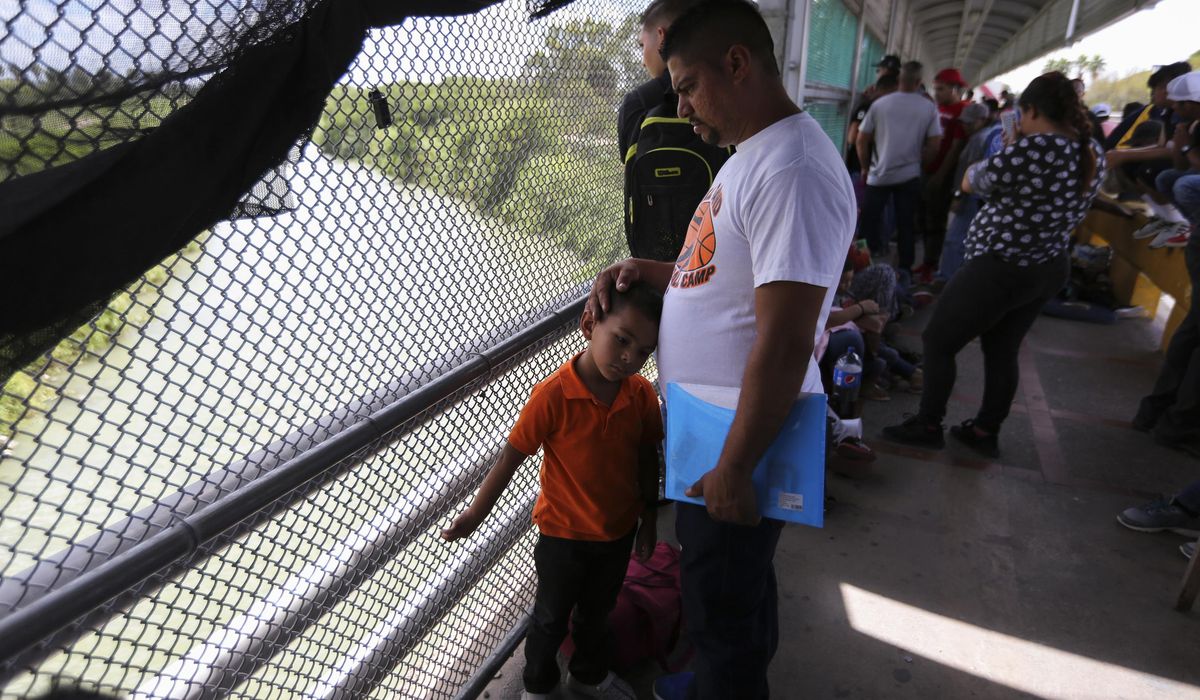


You’ve heard the horror stories of illegal immigrant kids who are forced into sex trafficking or labor trafficking. Jarrod Sadulski, an expert on smuggling, can tell you how those kids end up in the hands of the cartels in the first place.
Mr. Sadulski has been studying the cartels and talking with migrants on both sides of the border and is revealing horrifying details of what the smugglers put them through.
Nearly every single migrant from Central America or South America is robbed in some way, he said. Some are murdered if they can’t pay. Others are kidnapped and taken to Western Union to collect money from family members.
Families have their children stolen — and those children, kidnap victims south of the border, on this side turn into the Unaccompanied Alien Children that the U.S. government then sends out to communities across the country, where a grim fate often awaits.
Occasionally it’s sex trafficking, but usually it’s forced labor.
“The cartels are exploiting this by having children placed with sponsors who exploit the children for profit,” Mr. Sadulski said.
He is scheduled to appear before a GOP Senate roundtable on Tuesday to talk about his findings.
He recently completed a border trip where he visited a shelter in McAllen, Texas. There the folks who ran the facility told him of one mother who refused to let go of her child. When pressed, she told the staffers it was all she had left.
“She explained that en route to the southwest border, just south of Reynosa, Mexico, she was robbed by the Sinaloa cartel. Not only were all of her belongings taken from her but so were her other two children because she had no money for bribes,” Mr. Sadulski said.
He said what typically happens to those taken children is they will be brought to the border separately and crossed over as unaccompanied minors. They’re told to give the U.S. government the name of a potential sponsor here in the U.S., they get released to that sponsor and then they are put into child labor.
Mr. Sadulski said he spoke with one criminal investigator who was tasked to follow up with 25 kids at their sponsors’ homes here in the U.S. He was unable to track down 23 of the kids.
“They never arrived with the sponsor or were taken away by unknown men after they arrived,” Mr. Sadulski recounted. “The way that the cartels are doing this, tracking all this, is the cloud. So there’s a digital footprint to this.”
Mr. Sadulski underscored the centrality of the cartels to the smuggling economy and their ruthless approach to those they are bringing north.
He said cartels will place operatives inside migrant groups or at shelters along the way. Those operatives are on the lookout for folks that can be robbed or kidnapped.
Those who can’t make the payments may suffer a worse fate.
“I spoke with someone from Venezuela. He also came through the violent Darien Gap. While in the Darien Gap, he observed two people raped and murdered because they did not have bribe money,” Mr. Sadulski said.
In Progreso, Mexico, he saw migrants sleeping on sidewalks. He spoke with some Russians who were waiting for their turn at one of President Biden’s “parole” programs.
Unaccompanied children have been a challenge for the U.S. government dating back at least to the 1980s, but the challenge has become more acute over the last decade as the children have reached tidal wave proportions.
Under U.S. policy Mexican or Canadian children can be quickly ousted. But those from further afield must be turned over to the Health and Human Services Department, which holds them until a sponsor can be found.
When the numbers are large, though, the government starts cutting corners in searching for sponsors and things can turn ugly.
The surge of children crossing the border during the Obama administration and early in the Trump years proved fertile recruiting ground for MS-13, helping fuel a violent resurgence of the gang late last decade.
UACs who have arrived under President Biden have been linked to some horrifying crimes, including the stabbing death of a Florida man and the strangulation death of a 20-year-old autistic girl in Maryland.
HHS says it has no responsibility for the children once they are placed with sponsors.
Some members of Congress disagree and have prodded the department to do more.
The New York Times won a Pulitzer prize for its reporting last year on forced labor industries that rely on illegal immigrant children, estimating that some 200,000 migrant children are at work in violation of the law.
Then there’s the crush of needs. The kids are stressing school systems, which can’t hire English language learning teachers fast enough.
• Stephen Dinan can be reached at sdinan@washingtontimes.com.
